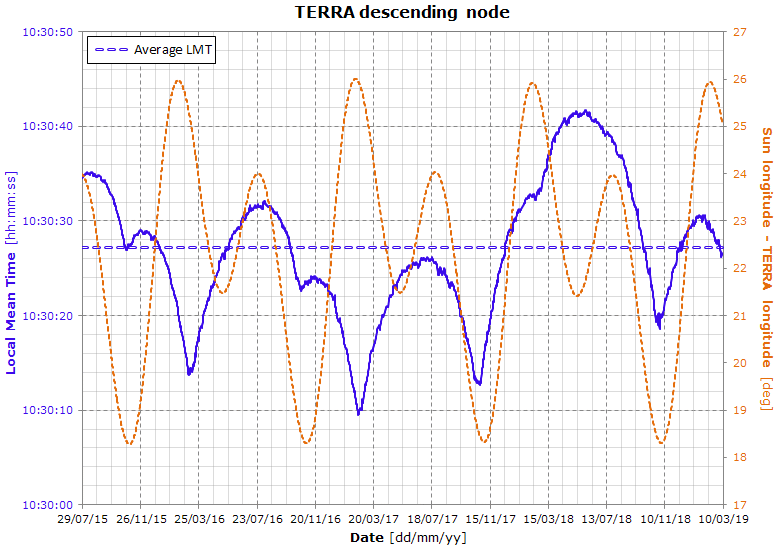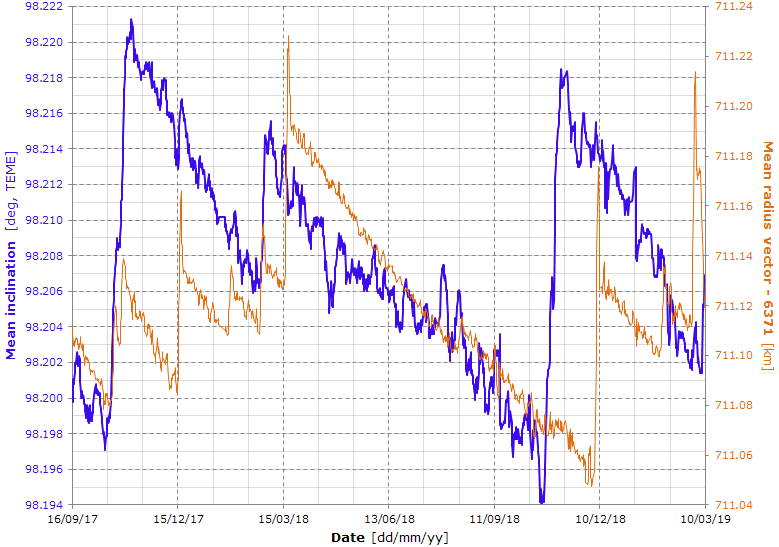 Terra's descending orbit crosses the equator at 10:30 am local time during each orbit (hence the original designation "EOS/AM-1").
Terra's descending orbit crosses the equator at 10:30 am local time during each orbit (hence the original designation "EOS/AM-1").According to NASA's press kit (pdf, 236 KiB) clouds typically form over tropical land in the afternoon as the surface warms, creating updrafts; hence, Terra's morning view provides clearer images of the Earth's lands.
This graph shows the actual equatorial crossing LMT and the difference between the geographic longitude of the Sun and of the satellite.
LMT is calculated as: LMT = UTC + lon / 15, where lon is the geographic longitude of the satellite when it crosses the equator.
 Here's the mean orbital inclination and the mean radius vector.
Here's the mean orbital inclination and the mean radius vector.